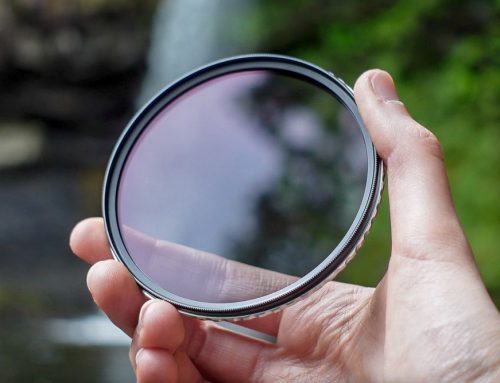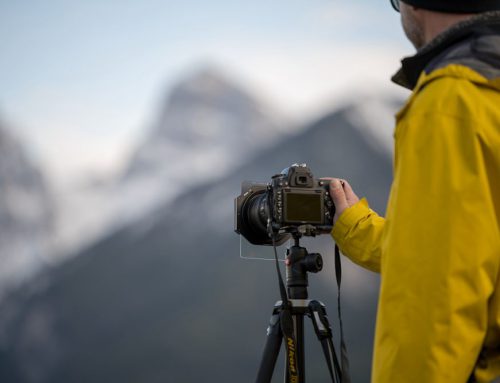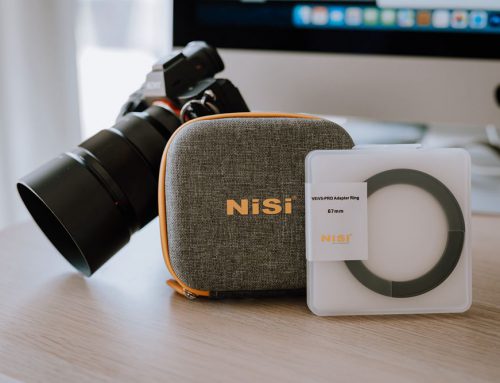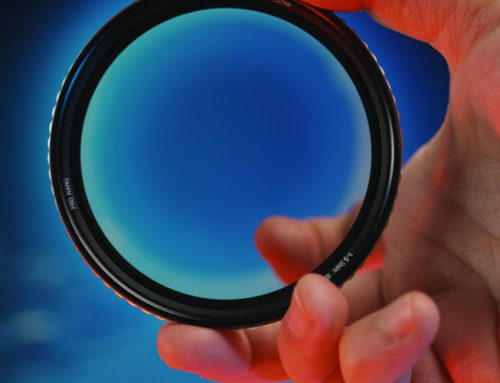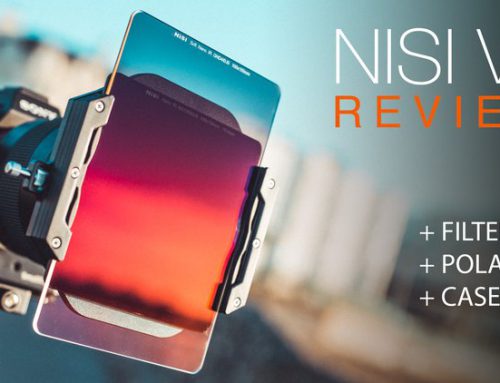Author : everlookphotography
Earlier this year I was contacted by Nisi regarding a trial of their filters. I already use the Lee system of filter holders but many of the filters were starting to get a little banged up so I was due for a replacement set. The issues I had hoped to address with the new Nisi filters were all in relation to shortcomings I had found with the Lee system and my general setup.
1. The distinct cast of the big stopper (Lee 10 stop ND) and to a lesser extent, the little stopper(Lee 6 stop ND).
2. The need for a 105mm polariser and adapter to be place in front of the filter stack resulting in vignette. As a result, I had never used this combination and was instead screwing the adapter rings to the thread of my existing CPL. This creates quite an unsteady setup with vignetting up to about 18mm .
3. Durability issues with resin filters (Lee do have glass filters as well but I have gone cheap in the past and bought a few resin filters!)
4. I have a filter pouch that sits on a waist belt made by lower pro. If the material in the filter pouch starts to get dirty or wet, then it’s goodbye to clean filter use. Slotting the filters back into dirty material just smears the filters even more.
5. Shooting directly into light means I usually have to take off my filters. The Lee filters and my polariser seem to create too much flare and artefacts.
6. Cost is always an issue when deciding on a setup.
Some of you that are of sceptical minds may be wondering if I have been ‘bought out’ by Nisi and mind controlled into writing a review that espouses their greatness. After all, you may have noticed a bunch of positive reviews all of a sudden appearing on photographer sites regarding Nisi filters? I must admit that I was in a suspicious mindset when contacted by them about this free ‘trial’. Though I may get in trouble with Nisi, I will speak my mind freely about the positives and negatives of the filter setup.
North Curl Curl Rocks : Taken with a Nisi CPL and 3 stop soft GND
It’s always exciting to receive new gear in the mail and so it was with great anticipation that I opened up the package. I won’t bore you with the details of the packaging other than to say that I had no issues with it whatsoever. Sturdy leather pouches for the filters and a filter pouch and adaptor pouch which were functional . I received a V5 filter holder set up with a 67,72, 77mm adaptor rings, an ‘in- filter holder’ polariser (more on that later) , a 3 stop soft edged GND, a 3 stop reverse edged GND and a 10 stop ND filter. The following are my thoughts and mental comparisons to my current setup regarding each individual part of the kit.
Sydney Harbor Bridge taken from Observatory Hill with Nisi CPL an 3 stop soft GND
Adapter rings and holder: (Neutral – disadvantage)
The holder itself feels solidly created and on the whole, more sturdy than its Lee counterpart. It sits level with the front element of the lens and thus far out to 16mm I have not noticed any vignetting. Also, with the polariser set up you can still stack three filters without vignetting. This is a clear advantage.
The need for adapter rings is not new to filter holder setups but Nisi have opted to go with an 82mm standard ring with step down rings provided within the kit. I found these a little fiddly to insert into the main ring and this was in a warm , unchallenging seaside environment . I can imagine it would be tricky in a cold and wet environment when I can barely operate buttons on a remote let alone fiddle around with stepdown rings. One option would be to leave the step down rings attached to the front of all lenses on your kit but this still means extra maneuvers while setting up compared to my current system. With the Lee system, the filter holder clips directly onto the ring. In the Nisi system, the filter holder is clipped on to the main 82mm ring which then has to be fitted to an adapter ring for lenses smaller than 82mm. The other area of concern I had was the small locking mechanism that clips the holder onto the ring. I haven’t had any episodes where the holder has fallen off but I can imagine the nasty sound of breaking filters should that accidentally happen with a hard surface below. This is a disadvantage in the field for Nisi but an advantage in cost given that the three rings ship with the holder.
Circular Polariser setup (Neutral – advantage)
This is Nisi’s real innovation which I think is advantageous in some settings and possibly inconvenient in others. The thin circular polariser sits within the 82mm ring and is adjustable with a knob on its side. This means that you do not have to place a large 105mm polariser in front of the filter stack and it means there are no vignetting issues. It also give you the ability to stack three filters in addition to the polariser. A clear advantage.
Another positive is that the polariser provided appears to act far less as an ‘pseudo-ND’ filter than other polarisers. For me this is an advantage as I have been removing polarisers in the past when in low light settings attempting to obtain shortish shutter speeds for dynamic wave motion. One might argue that it might not polarise fully but I’ve found that it does its job in a seascape setting to allow ‘see through’ to rocks below the surface.
The disadvantage boils down to when you are not using your gear as a dedicated tripod set up landscape shoot. With my previous setup using a screw on circular polariser, I could convert that to a handheld shot without any adjustment apart from removing the filter holder. My practice on stowaway would be to place the lens cap over the CPL attached to the lens. While I could still shoot with the filter ring attached for hand held shots, the speed at which you rotate the CPL is limited by the small knob. Currently there is also no cover provided for stowing this setup with protection for the CPL attachment. If Nisi could consider a cover for this setup, it would be a clear win for me in all situations.
The filters themselves: (clear advantage…..so far)
On first inspection it appears that the Nisi filters had a magenta cast to the naked eye. This was of concern but fortunately this has not been replicated in the field. The bottom line is that the GNDs have little if any cast whatsoever . The 10 stop ND filter has an ever so slight warming effect. The CPL does not appear to alter the temperature of any given scene. The filters have been easy to clean with Kim wipes and thus far I have not noticed any scratches. It is important to note that Lee filters of the same size (100mm) fit well into the Nisi filter meaning that you can still use your old filters. I have found that some of the filters fit very tightly into the designated slots which is generally a good thing but with my concerns about the integrity of the attachment to the ring, I am concerned that one day I will end up pushing the entire holder off the camera with that dreaded sound of smashed glass. The three stop reverse GND is the major culprit where I feel I almost need a hammer to squeeze it . Thankfully, these days I very rarely use this type of filter.
The following images demonstrate various filter setups with Lee and Nisi and the associated cast (or lack of). Images were lightroom imports which have had a very basic sharpening algorithm applied. All images were shot in auto white balance and manual mode. You can see that the Nisi filters all had next to no cast whatsoever which gives this a nice advantage over the Lee ND counterparts.
Lee ‘Big Stopper’ : 10 stops worth of blue/cyan cast. Thankfully this isn’t hard to correct in post it is still an inconvenience
Lee ‘Little Stopper’ : 6 stops and much less blue cast than the big stopper
Left : Nisi CPL alone. Centre: Nisi CPL, 3 stop soft GND. Right: Nisi CPL, 3 stop soft GND ,10 stop ND (slight cooling with GND, slight warming with 10 stop ND)
Left : Nisi CPL alone. Right Nisi CPL , 3 stop reverse GND, 10 stop ND.
The filter pouch: (probable advantage)
This is a solid leather lined pouch that spaces the filters apart such that they have no contact with any cloth surface whatsoever. There are plastic slot in modules that allow the 100x100mm ND filters to be reached from the top of the pouch while the 100x150mm filters fill the entire height of the pouch. I found the button to be a little flimsy and place this pouch within my larger waist pouch which holds other accessories such as Kim wipes and remotes. Because of the loose button mechanism, I would not be game to hook this directly on to my waist belt. In terms of travel, it’s an advantage since I can pack these into checked baggage without worrying about damage. With my previous cloth pouch, I would need to carry them on board.
Cost Factor:
I’ve written this from the point of view of an Australian consumer buying locally, though I am sure if you did a bit of hunting you might be able to find more competitive prices (especially for Lee) overseas. The following table describes the money I would need to set aside if I were to start from scratch. The major savings appear to be in the setup of the system with the Lee system requiring individual purchases of adapter rings and a very costly 105mm CPL. They also have a separate system for the Nikon 14-24 and 150mm filters which which you can look up from the two stores listed below.
So overall, how did the acquisition of the Nisi setup address my six issues?
1. Tick : Major improvement in cast
2. Tick: I can now shoot happily with a CPL and a stack of 3 filters without vignetting. I just wish I could stow this setup away as it is but with protection for the CPL.
3. I will have to report on filter durability after extended and more challenging use
4. Tick : I like the modular setup of the filter holder provided. You just need a system to remember where you are placing your square vs rectangular filters.
5. So far so good, especially for the polariser alone. This needs further testing.
6. Nisi comes out on top for my particular set up. It appears that the filter prices are similar to Lee while there are savings on the setup.
To conclude with, this is a video comparison I have made comparing the Lee and Nisi setups . I have tried to remain as impartial as possible and let you decide on which works for you!
And finally, some of the edited images from the above RAW examples using the new setup:
North Curl Curl tidal pool : Nisi CPL, 3 stop reverse GND, 10 stop ND
O’Sullivans Beach: Nisi CPL, 3 stop soft GND








